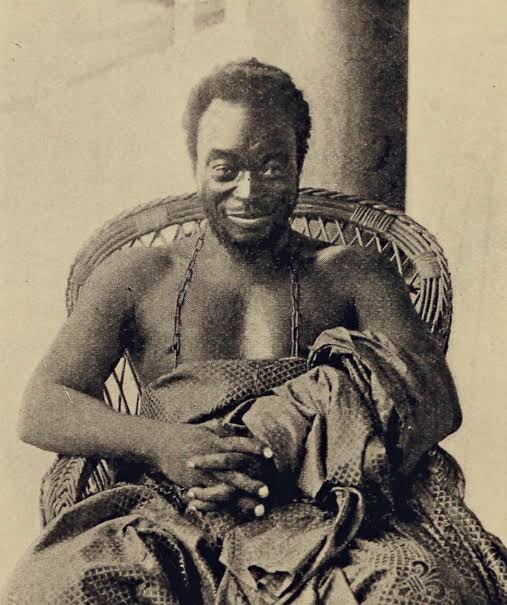
Many people have asked me about the ancestry of the outgoing governor of Edo State, Godwin Obaseki. I am not a historian, but I share the little I know about this particular Obaseki, which isn’t much since he did not entrench his roots in his homeland, perhaps because he did not spend much of his formative years in Edo.
Growing up in Benin during my time was very interesting. Everyone my age seemed to know or had heard of each other, and without even meeting, we were aware of almost everyone’s character traits.
Most of my peers attended UNIBEN, Ambrose Ali University, or Auchi Polytechnic, while others ventured to universities and tertiary institutions far away. However far they went, we all came back home from time to time to hang out and celebrate.
It was a period I can’t forget, for we were shaped on and by the streets of Benin.
Returning to Godwin Obaseki, there’s something called deoxyribonucleic acid (abbreviated DNA), which Google tells me is the molecule that carries genetic information for the development and functioning of an organism. Simply put, it is a genetic code found in individuals who share the same genes.
This brings me to the DNA of the Obasekis. The Obaseki DNA is quite special and peculiar in the context of the Benin Kingdom.
Here’s what I found in my research:
The ancestral father of the Obaseki bloodline, Chief Agho Obaseki, the Iyase of the Benin Kingdom, extricated himself from the fate that befell the ranks of chiefs who led a guerrilla resistance to British occupation. Chiefs Ologbosere, Asoro, Ebohen, Uso, Obakhabhaye, and Obayuwana committed s√ic•ide in detention, while others captured at different times were summarily ex*3cuted.
Interestingly, Chief Agho Obaseki collaborated with the invaders and rose to prominence as a capable administrator and the closest confidant of the British between 1898, when Oba Ovoranmen was exiled to Calabar, and the abolition of the monarchy.
In 1914, coincidentally the year Oba Ovoranmen “N’Ogbaise” died in Calabar and the year the southern and northern protectorates of Nigeria were amalgamated, leading to full-blown colonialism, Chief Obaseki, as Iyase; what some refer to as Prime Minister or leader of town chiefs, sought the position of Oba with British support, even encouraging them to advance the claim that the crown wasn’t patrilineal when the British Crown and Colonial Office in London decided to reinstate all traditional monarchies that had been toppled as a prelude to indirect rule.
There was a stalemate, as the British administration could not navigate this novel interpretation of the Benin monarchical structure and tradition.
Historians record that just as matters reached a stalemate, something unexpected occurred: Chief Agho Obaseki suddenly dropped dead!
“Who says jazz doesn’t exist? Who says it was just ordinary?” a dedicated Benin archivist once asked me.
This is how the original heir to the throne, Prince Aiguobasinwin Ovonramwen, ascended as Oba Eweka II and was crowned the thirty-sixth Oba of Benin in 1914, ruling until 1933.
Turn the page: Oba Eweka II died in 1933 and was succeeded by Crown Prince Aguobasimwin Eweka, who took the name Oba Akenzua II (the Great).
Now, Nigeria was under full-scale colonial administration, and Benin became the Benin Province, with the monarchy under its purview. You can already perceive the herculean struggle the ancient monarchy faced in navigating the new political and administrative structures imposed alongside it.
As if this wasn’t enough, in an age when discussions revolved around “taxation and representation,” championed by a fledgling bourgeois elite class resulting from western education and its new economy, the most prominent figure in Benin was none other than Gaius, the son of Chief Agho Obaseki.
By 1951, Chief Gaius Obaseki CBE had become not just a political figure with national visibility but also the Vice President of the Action Group.
In Benin, he led the new generation of educated residents, was a prominent government contractor, and was at the forefront of those seeking representation and a voice in Benin’s governance. Believe it or not, he had risen to the influential position of “Olojo” or “Oluwo” of the Ogboni Confraternity in Benin Province, and was a significant national member of the Ogboni.
The Ogboni in Nigeria were akin to the Freemasonry movement in Europe and much of the western world, being an influential society of the politically progressive and socio-economically influential minds in society. These were daring men of power, influence, and action.
As if this wasn’t enough, Gaius sought and was conferred with the title “Iyase of Benin” (just like Chief Agho) with the support of educated youths, the taxpayers’ community, and the colonial government, who were his previous employers.
Of course, Oba Akenzua II had clear reasons to be apprehensive. Gaius Obaseki was a nominated member of the Nigerian Legislative Council and the governor’s Executive Council. After reforms in the local governance structure, the taxpayers’ group gained control of a newly created Benin Divisional Council.
Gaius Obaseki became chairman of the new Council and also chair of the Administrative Staff Committee, which coordinated the activities of the Benin Central Council, the Native Authority led by the Oba, and the Divisional Council.
He served in these capacities while holding the title of Iyase.
According to history, Gaius Obaseki used his authority to question and undermine what he perceived as the overextension of royal prerogative in the domain of citizenship.
This competition was perhaps inevitable in the circumstantial coexistence of the past and present, shaped by colonial occupation and its governance structure.
During Obaseki’s chairmanship, the Divisional Council passed a motion to reduce the Oba’s salary and to compel the Oba to seek approval before awarding chieftaincy titles to citizens who, by the nature of the new titles, could become council members.
Typical of a temperamental personality with that peculiar arrogance called “enlightenment,” Gaius Obaseki allowed himself to be seen as “the man who knew everything.” For a time, he seemed avant-garde, with the glitterati and alluring posturing that accompanied it.
Ultimately, from a political standpoint, such a condition was destined to “boomerang,” and boomerang it did BIG TIME come the 1951 Provincial elections.
The Palace ambushed Gaius Obaseki in an epic battle that continues to echo over half a century later, through the establishment of the Otu-Edo cultural organization, which espoused pro-Bini traditional heritage and values as a counterweight to the Ogboni Confraternity. This was a battle for minds.
With Chief Humphrey Omo Osagie, leader of Otu-Edo and candidate of the National Congress of Nigeria and Cameroons (NCNC), facing off against Chief Gaius Obaseki, the Olojo (Oluwo) of the Ogboni Confraternity representing the Action Group (AG), the stage was set for a decisive confrontation with multidimensional ramifications in the political and socio-cultural history of the Benin Kingdom.
To cut a long and fascinating history short, the AG was decisively beaten. The violence following its loss was marked by the burning of houses and businesses belonging to its prominent members, along with many acts of sacrifice conducted to wash away the evil that had temporarily “befallen the land.”
Chief Obaseki subsequently relocated to Ibadan, the regional capital of western Nigeria, where he first gained political prominence. He continued his political career in Ibadan and Lagos as a member of the Western House of Assembly and the Legislative Council until his death in 1956.
Thus, partly because of Gaius Obaseki, the AG’s influence waned in Benin Province, while the NCNC’s flourished; thanks especially to the often extremist pro-Palace posture of Humphrey Omo Osagie and his Otu-Edo movement.
I forgot to mention another clash between H. Omo Osagie and Gaius Obaseki that played out in 1953. Otu-Edo managed to have Iyase Obaseki deposed as Chairman of the Executive Committee of the Benin Divisional Council, allegedly for not attending meetings. His orderly and police escorts were withdrawn, and his monthly salary was stopped.
However, history records that the Oba did not cooperate in attempts to strip him of his title as Iyase, allegedly for not performing the rites of the office.
Thus, Gaius Obaseki retained his title as Iyase, although he never formally performed the traditional ceremonies of acceptance of the title in the first place.
He was later replaced as Iyase by Chief Omo Osagie, who by now adopted the nomenclature “B2” (B1 being none other than Oba Akenzua II himself).
Now, you can imagine the consternation of Oba Ewuare II when, in 2016 or thereabouts, Comrade Adams Oshiomhole, the departing governor of Edo State, arrived in the court to present yet again another Obaseki as his choice for state governor!
Can you now see how strong DNA is and why scientists James Watson, Francis Crick and Maurice Wilkins were awarded the Nobel Prize in Physiology or Medicine in 1962 for their discovery of the molecular structure of DNA?
Eeeooo, what may have gone through the mind of the revered monarch is best left to the imagination of the reader.
The rest, they say, is history. – Moji Danisa




